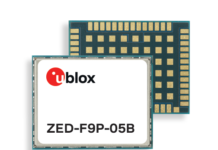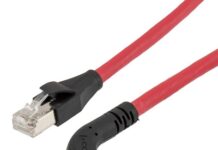
The article describes how Maxim’s snapshot GPS receiver offers much lower power consumption than traditional tracking GPS receivers, making them ideal for wearables and IoT applications where battery life is at a premium.
One of the biggest challenges in adding Global Positioning System (GPS) capability to battery-powered devices such as vehicle trackers, asset trackers, or Internet of Things (IoT) sensors is the shortened battery life. Increasing the size of the battery for longer runtime is, in almost all cases, not an option as this would increase the size, the weight, and the cost of the wearable.
To reduce the GPS receiver’s power consumption of the, most designs keep the receiver off until the receiver’s position is required. As the receiver wakes up from what is referred to as a cold start, it acquires and locks onto the satellite signal, extracts the navigation message, which includes the satellite orbit and atomic clock bias information (the ephemeris data), and with a minimum of four satellite signals, it can determine position and time. However, because the navigation message data rate is a low 50bits/sec, the receiver must be powered on for several seconds to receive the broadcast data, normally 28 seconds or longer. It is only then that the receiver can calculate its position.
One way to help extend the battery life is to reduce the amount of time the receiver is on before a position is calculated. A snapshot receiver does exactly that. In a snapshot receiver implementation, the receiver is not on nearly long enough to receive and decode the ephemeris data. Instead, up to 28-day ephemeris data from a server in the cloud is pre-loaded into the receiver, allowing it to wake up and report its position within a couple of seconds. The reduction in the time the receiver is on can extend the battery life by an order of magnitude, making it ideal for applications where battery life has been a barrier to the adoption of GPS technology.
This snapshot implementation is based on a patent granted in 2015 to Baseband Technologies Inc, of Calgary, Alberta. Maxim Integrated has partnered with BTI and now offers a full GPS solution using the MAX2769C GNSS L1 receiver and the MAX32632 ARM Cortex M4 microcontroller running BTI firmware.
It is helpful to think of receiving the satellite signal to obtaining the position coordinates as a three-step process: Signal Capture, Signal Processing, and Position Estimation (Figure 1). In addition to the low-power consumption, the Maxim/BTI solution provides the flexibility to perform both the signal processing and the position estimation steps either on or off the board by offloading to a cloud server. This can further reduce both the power consumption and the system’s cost.
Figure 1: Implementation of Snapshot Receiver using MAX2769C and MAX32632. (Source: Maxim Integrated)
In addition to the power-saving features of the snapshot algorithm, the use of the MAX32632 with its flexible power modes, an intelligent peripheral management unit (PMU), dynamic clock gating, and firmware-controlled power gating further reduces the power consumption of the GPS system.
Table 1 compares the energy usage of the Maxim/BTI GPS solution to a commercially available low-power receiver module to illustrate the power savings that the snapshot receiver delivers. Both receivers are turned on hourly to receive the satellite signal, calculate the position and transmit their position wirelessly. The grey portion of the bars is the energy required by the wireless portion to transmit the position and is the same for both solutions. On the other hand, the energy required for the position fix and the Maxim system’s ephemeris download is less than 20uWh, while the competitor consumes 170uWh or nine times more energy.
Table 1: Energy consumption of Maxim GPS system vs. the competition (Source: Maxim Integrated)
Another feature of the snapshot receiver is its ability to specify the acquisition window or how long to capture the satellite signal. A longer capture window does improve the position accuracy and increases the number of digital samples to be processed and thus the power consumption. The firmware allows acquisition windows of 4ms, 6ms, 8ms, 10ms, 16ms, 22ms, and 30 msec. Table 2 lists the Maxim/BTI GPS solution’s power consumption for the various acquisition windows and for once-a-minute and once-an-hour position update.
Table 2: Power consumption of the Maxim/BTI GPS Solution (Source: Maxim Integrated)
Using the data in Table 2, one can easily calculate how long a 100mAh coin cell would last. As shown in Figure 2, depending on the capture window, a 100mAh coin cell can last up to 13 months depending on the capture window.
Figure 2: For once/hr open-sky application, a 100mAh Cell can last 13 months. (Source: Maxim Integrated)
Conclusion
Maxim’s snapshot GPS receiver offers much lower power consumption than traditional tracking GPS receivers, making them ideal for wearables and IoT applications where battery life is at a premium.
For more information, kindly visit: Mouser’s Blog


















